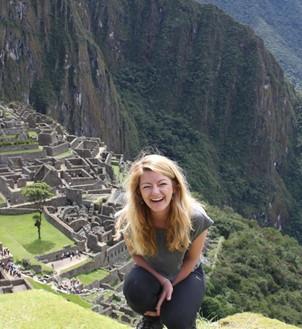I have been hearing a lot about Iceland recently and it has been very high on my bucket list. I mean, why would you not want to go? Volcanoes, geysers, glaciers, waterfalls (so many waterfalls), geothermal pools and the possibility of seeing the northern lights: how could you say no? Iceland is definitely the destination du jour with the national visitors statistics measuring 1.3 million tourist visiting in 2015 and it is predicted that in 2017 there will be over 2 million visitors. This is a huge amount compared to the number of inhabitants (just 300,000). You would think Iceland would be overrun by tourists - but this isn’t the case. Once out of Reykjavik it isn’t uncommon to not see another car for miles. I went to Iceland on the drive & hike adventure expecting much, and to my delight it surpassed my expectations. The landscape is fascinating and completely alien as the island is truly alive.
Waterfalls
They are everywhere, it is hard to even explain how many there are. Most of our suggested walks revolve around walking to a waterfall, each of them unique and stunning in their own way. Personally my favourite was Svartifoss, which is a waterfall in Skaftafell, in Vatnajökull National Park. It stood out to me because of the basalt columns which surround it and as I approached it, a gap in the clouds allowed the sun's rays to interact with the water vapour creating the most beautiful rainbow.
Black sand beaches
Black sand beaches are a rare site most places in the world, but Iceland is has them in abundance as it is a volcanic island. The black sand is created by lava hitting the cold Atlantic water, causing the lava to explode breaking it into smaller pieces which then erode over time.
Geysers and Geothermal springs
Iceland is known for its famous Geyser, which has lent it’s name to all other Geysers in the world. Geyser is one of the sites you see on the famous Golden Circle, it is in the middle of the Geyser Hot Spring Area which has been active over 1000 years and is filled with boiling mud pits and geothermal pools. Of course all of this activity also leaves the air with a distinct smell of sulphur (which smells like egg).
Geothermal springs can be found in most towns as the country is situated on a ‘hot spot’ on the earth resulting in a lot of geothermal activity. Iceland’s most famous hot spring, the Blue Lagoon is one of the most visited attraction in Iceland, but if you aren’t too concerned about visiting it (like me) I can recommend visiting more local ones on your trip as they can be found everywhere for a quarter of the price and less over run by fellow bathers. Visiting the hot springs was a highlight for me and after a long day of driving and walking there is nothing better the seeking out your local hot spring and having a soak. Hot springs aren’t the only place to find warm water, we randomly found a warm water shower in the middle of nowhere!
Glaciers
Iceland is home to the largest Glaciers in Europe and 10% of its land mass is covered in glaciers. Glaciers are formed on land when snow stays long enough in one place to be compressed into thick ice masses. A unique characteristic of glaciers is their ability to move as the force of gravity acts upon the huge mass of ice, resulting in the land beneath the glacier being eroded.
Vatnajökull used to be at the shore line of the ocean dropping its icebergs into the ocean. However, it started drifting in land leaving deep gorges en route, which filled with melted water and large chunks of ice. These icebergs gather at the mouth of the lake's shallow exit, melt down into smaller ice blocks and roll out into the sea. This leaves us with the beautiful sites of Jokulsarlon and the Black Diamond Beach
Volcanos
If you have ever wanted to see a Volcano up close this is your chance! Iceland is covered in Volcanos, this includes 130 active and extinct volcanic mountains, due to its locations on the mid Atlantic ridge. We all remember the most recent volcanic eruption of Eyjafjallajökull in 2010 which affected air travel in the northern hemisphere grounding airplanes for days and leaving people stranded all over the world. [caption id="attachment_21435" align="aligncenter" width="900"] Get to know a Volcano![/caption]
Get to know a Volcano![/caption]
Northern Lights
The northern lights are one of the biggest draws to Iceland, they are however one of the most elusive and unpredictable attractions this country has to offer as there is no guarantee that you will see them. You can of course increase your changes by visiting Iceland from mid-September to mid-April as there is guaranteed darkness, giving you a longest possible window to spot the lights. The next important factor is the weather, you cannot see the lights when it is overcast and therefore you need to hope for clear skies. With a little bit of luck you will be a spectator to the wonderful show. 
All of the above make this one of my favourite destinations, it is such a beautiful and powerful country. Whilst there I was completely blown away by the landscape which is unlike anywhere I have been. It felt alive, and as cheesy as this sounds, when out there I felt like I was walking through history of the earth being created, exploring a country which is still growing every year (because of separating of the tectonic plates). It is hard to describe, you should just visit Iceland and see for yourself!




 Australia
Australia New Zealand
New Zealand South Africa
South Africa European Union
European Union